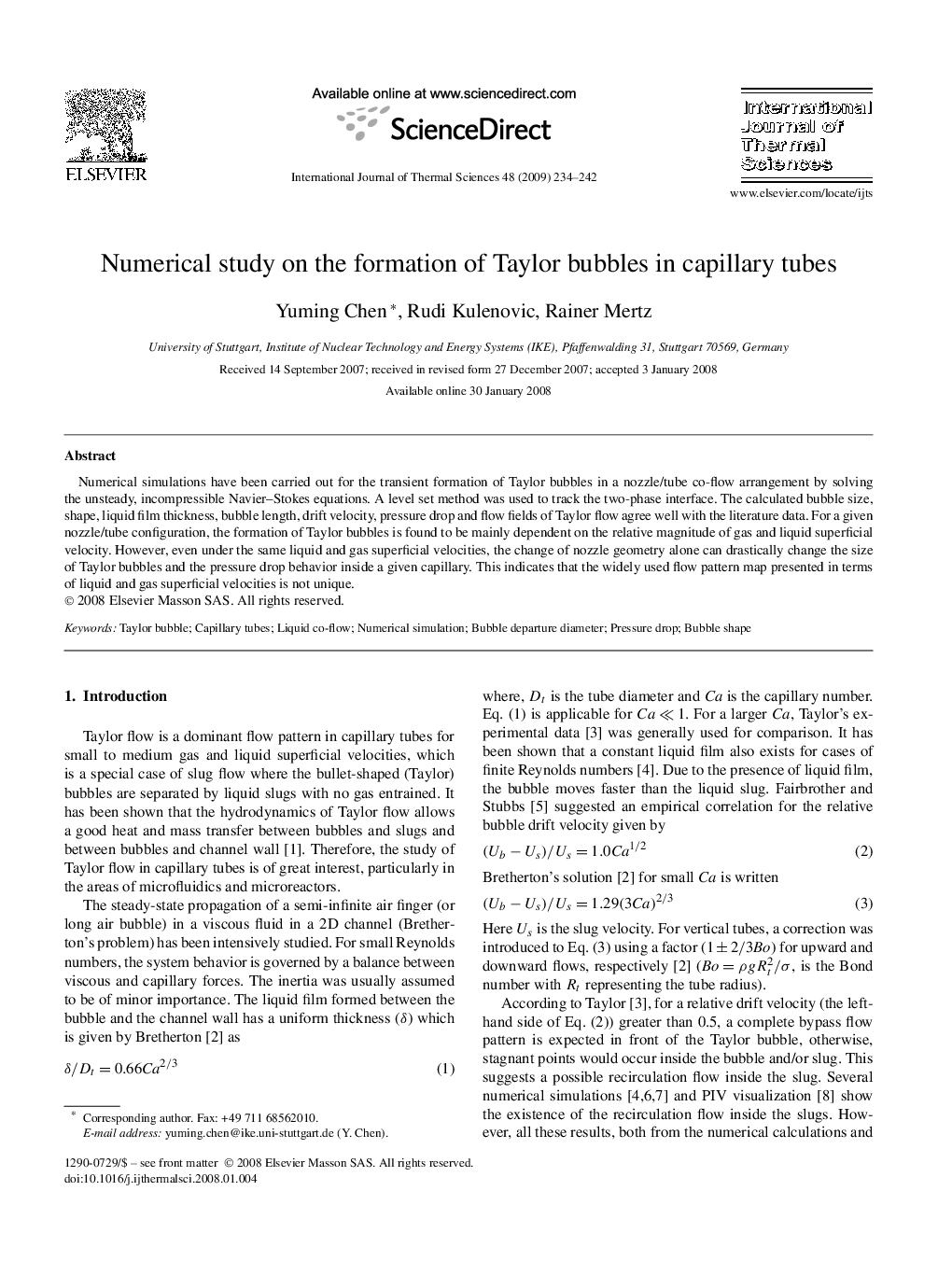| Article ID | Journal | Published Year | Pages | File Type |
|---|---|---|---|---|
| 669676 | International Journal of Thermal Sciences | 2009 | 9 Pages |
Numerical simulations have been carried out for the transient formation of Taylor bubbles in a nozzle/tube co-flow arrangement by solving the unsteady, incompressible Navier–Stokes equations. A level set method was used to track the two-phase interface. The calculated bubble size, shape, liquid film thickness, bubble length, drift velocity, pressure drop and flow fields of Taylor flow agree well with the literature data. For a given nozzle/tube configuration, the formation of Taylor bubbles is found to be mainly dependent on the relative magnitude of gas and liquid superficial velocity. However, even under the same liquid and gas superficial velocities, the change of nozzle geometry alone can drastically change the size of Taylor bubbles and the pressure drop behavior inside a given capillary. This indicates that the widely used flow pattern map presented in terms of liquid and gas superficial velocities is not unique.
